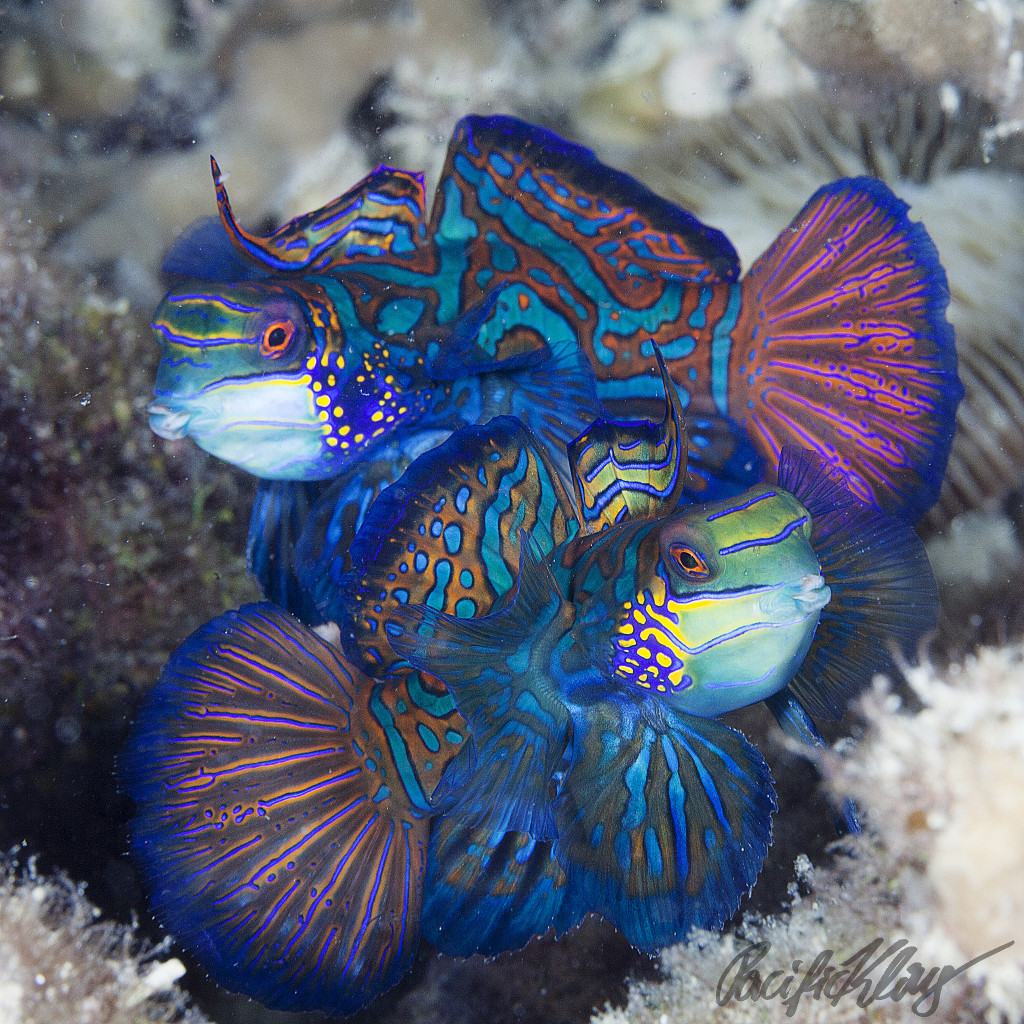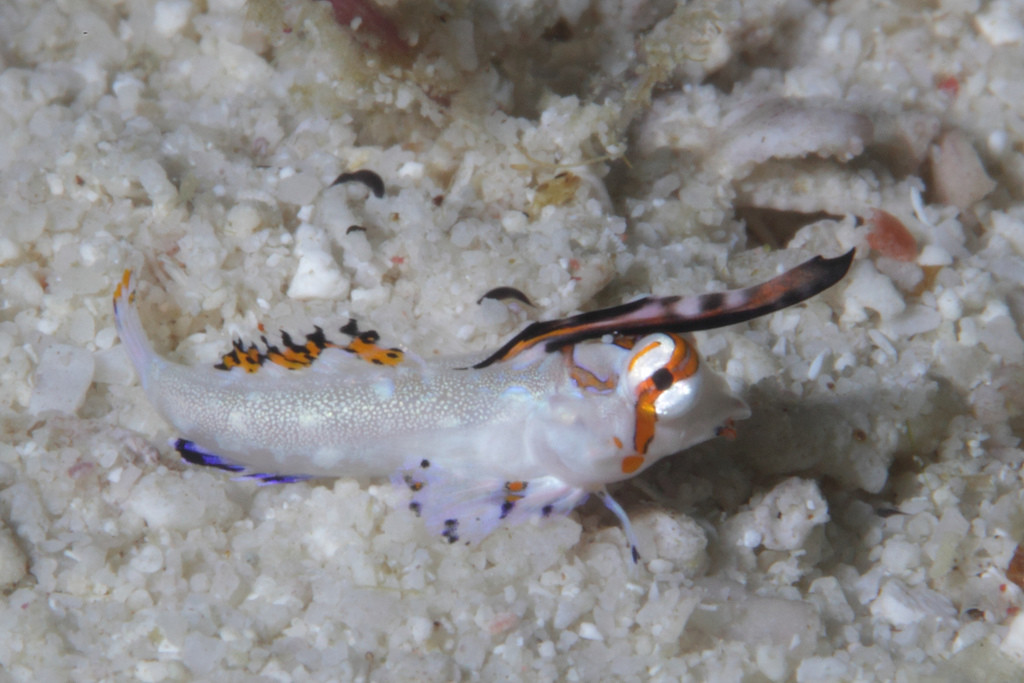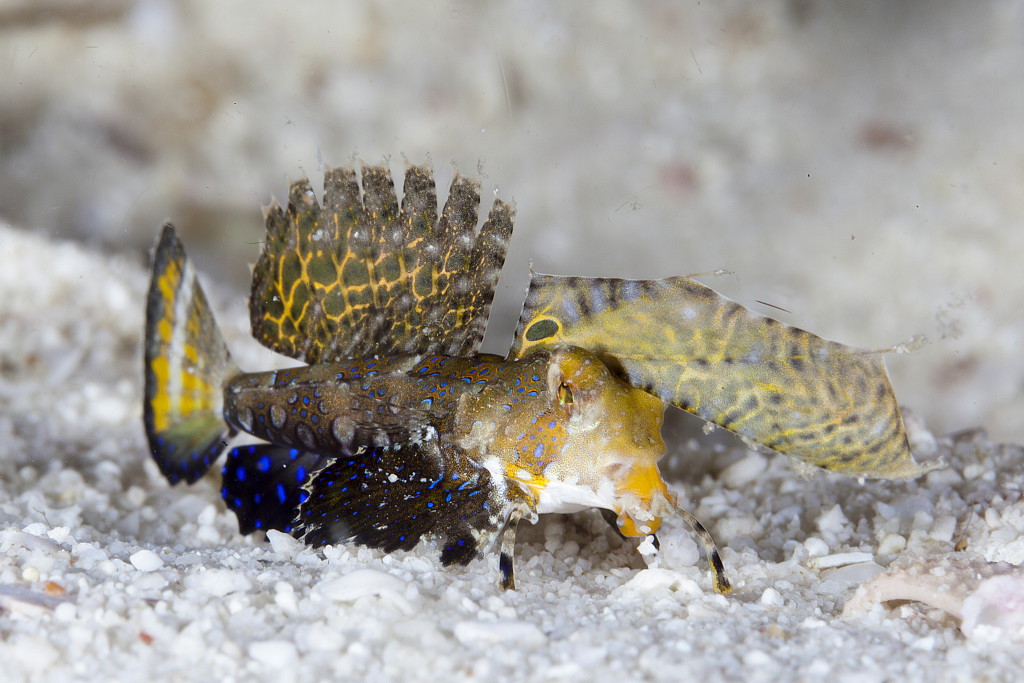By guest blogger Klaus M. Stiefel
“We saw some mandarinfish!” — the positive exclamation of this post-dive celebration rivals that of divers talking about manta ray and thresher shark sightings. And these often brilliantly colored small fish are indeed amazing to observe.
An Amazing Family: Dragonets
But it’s not just the mandarinfish that deserve the admiration of fish-watchers: many of their relatives in the dragonet family are also quite pretty and interesting fish. Fishbase counts 188 species of dragonets, making it a very diverse fish family. In older fish-identification books they are grouped with gobies, with the mandarinfish called “mandarin gobies.” Dragonets, however, are distinguished from gobies in a number of anatomical respects, most prominently their pointy mouths.

Click on the Fishbase link above and check out some of the dragonet’s pictures, for instance those of Kuiter’s dragonet. A lot of the images will not look alike. Are these cases of misidentification? No — dragonets are notorious for looking different as juveniles and as adult fish. Also, male and female dragonets look different, which is called “sexual dimorphism” (which is absolutely safe to look up at work). If you have ever seen mandarinfish mating you will recall that the male fish is bigger and has more elongated fins. Such differences can be seen in several dragonets. There can be several reasons for such a sexual dimorphism: often when adult fish vigorously defend their territories, the juveniles escape attacks by the bigger fish through a different coloration. They are hence not recognized as intruders by their larger conspecifics.

While some dragonets like the mandarinfish or the painted dragonet are gaudily colored, others are well camouflaged for their sandy habitat.
Dragonets are found in both tropical and temperate waters; I occasionally observed the painted stinkfish during my years of diving around Sydney. Like many other dragonets, it prefers crawling to swimming. Even though they never escape from a camera pointed at them by swimming away or hiding, these animals are surprisingly difficult to photograph because of their tendency to slowly turn around and crawl away from the photographer. Many times have I swum circles around these tiny fish, trying to capture their portraits. Although I must have seemed crazy, rotating underwater with a big camera, I hope you will agree that the images I got as a result were worth making a weird impression on my fellow divers.


